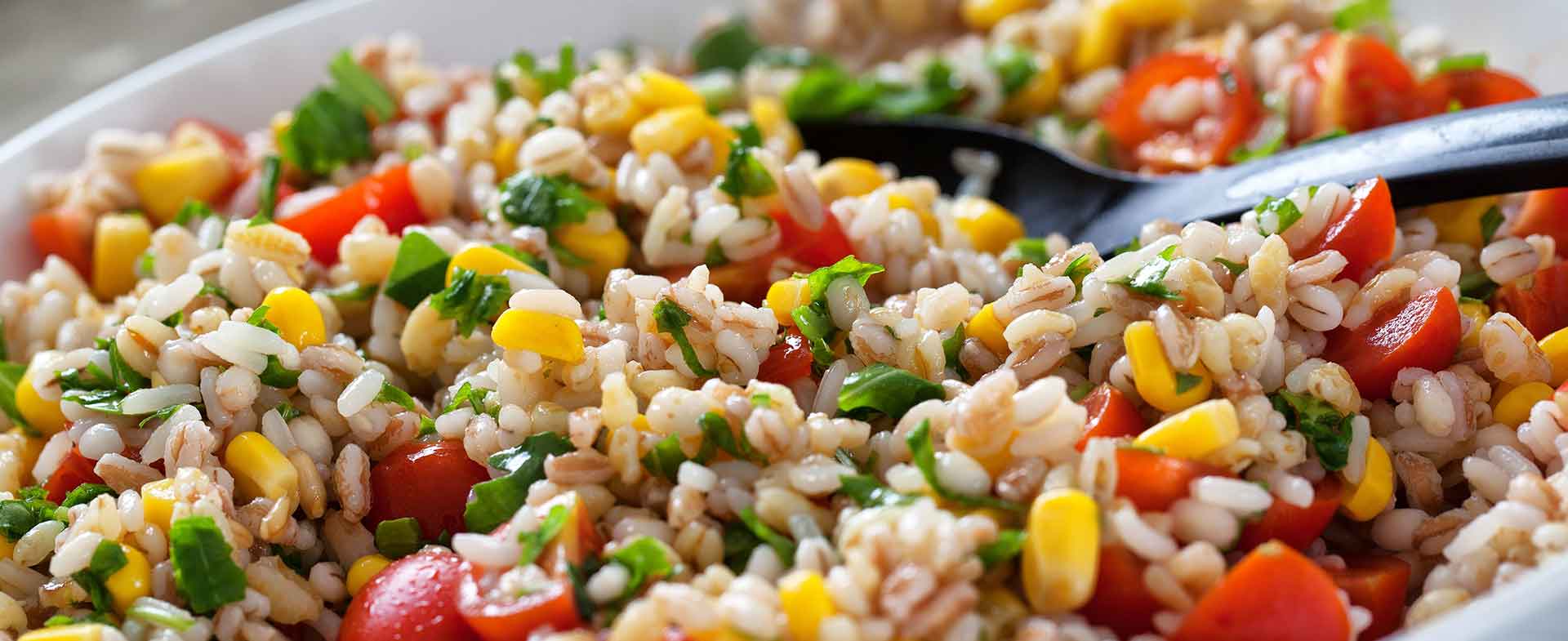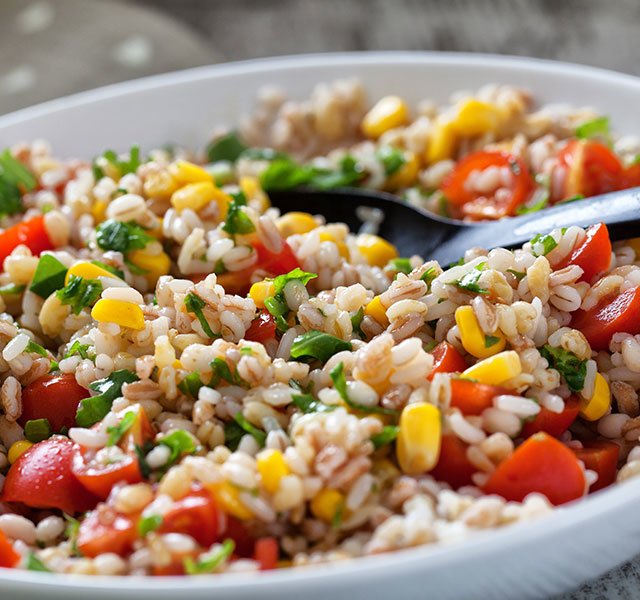Until the last century, nearly all grains were “whole.” But with advances in milling and processing, manufacturers began stripping grains of the good stuff (protein, vitamins, minerals and other vital nutrients) and leaving only the starchy endosperm (the plant’s food supply, which is naturally loaded with starchy carbohydrates). Sure, processors may “enrich” these products by adding back some of the lost vitamins, but they can’t duplicate Mother Nature’s perfection.
Unlike their processed counterparts, whole grains contain the entire seed of a plant, including the bran (the course outer layer that protects the plant from disease and sunlight), the germ (the portion of the plant that can sprout and form a new plant) and the endosperm. With all three parts of the plant still intact, whole grains boast countless vitamins, minerals and disease-fighting chemicals.
The good news? Food is like fashion —sometimes what’s old becomes new again. And ancient grains are a classic example. Here are six whole grains gaining ground among health-conscious food lovers that can add variety to your whole grain intake:
- Amaranth. At about one-fifth the size of a rice grain, amaranth is a nutrient powerhouse that you can bake into hearty breads, muffins and pancakes. It’s actually a seed, not a grain, so you can use it as a topping for breads, fish and poultry or even pop it like popcorn (though the grains are almost microscopic in size, so you have to pop a lot!). For a grain, amaranth is unusually high in protein and boasts plenty of calcium, magnesium and fiber. And it’s gluten-free to boot. That’s one hot meal ticket, especially in porridge form.
- Barley. With its unique shape and chewy texture, barley is surprisingly simple to include in recipes. Substitute it for rice or pasta, cook it as a side dish (barley pilaf, anyone?) or make it into bread. Perhaps best known for floating in soups and stews, barley adds a nutty flavor to foods and a whopping dose of nutrition, too.
- Bulgur. As the signature ingredient in tabouli (a delicious Mediterranean salad of parsley, tomatoes and bulgur), bulgur has a pleasant nutty flavor that complements salads, pilafs, breads and soups. A bonus: it packs a hearty 8 grams of cholesterol-lowering fiber per cup. That’s almost 4 times the amount in an equal serving of brown rice. Since bulgur is precooked, it rehydrates quickly, which is great news for busy cooks.
- Farro. Farro can be added to soups or cooked al dente and added to salads. You can also substitute ground farro for wheat when making pasta or bread and swap it out in recipes calling for barley or quinoa (though unlike quinoa, it is NOT gluten-free). And ancient grain face-off: it outranks bulgur in terms of fiber content (about 8 grams per cup).
- Freekeh. A cereal food made from green wheat that goes through a roasting process in its production, freekeh (pronounced free-kah) has at least four times as much fiber as other comparable grains. So your body digests it slowly, keeping you satisfied for longer periods of time. Since freekeh seeds are cracked into smaller pieces, you can use it the same way you use bulgur.
- Quinoa. Like amaranth, quinoa (pronounced “keen-wa”) is technically a seed, so it, too, is packed with nutrients and is gluten-free. While the slightly crunchy seed resembles cous cous in size, texture and odd-sounding name, it’s far more nutritious. In fact, quinoa is a good source of iron and copper, is high in magnesium and has 8 grams of protein in one cooked cup. Most importantly, it tastes good, too. It’s no wonder savvy food manufacturers are putting quinoa into everything from pasta to pre-made salads.
While ancient grains typically contain more nutrients and flavor than ordinary wheat, they unfortunately come at a higher price and may be more difficult to find. But as they increase in popularity, we may see the price come down. The good news is you can typically cook them the same way you prepare pasta or rice. Drop them in boiling water or stock, and then let them simmer until the liquid is gone. The end result typically looks like oatmeal but with the unique flavor profile of your selected grain and seasonings.
Trying new foods not your thing? You can dip your toes in by splitting unfamiliar grains with your trusty staples. Make rice pilaf with half brown rice and half farro, for example, or slip quinoa into meatballs instead of wheat bread. Want more specific guidance? Here are a few recipes to try:
What’s important is branching out, one grain at a time. So take your taste buds on an adventure and try something ancient, nutrient-dense and delicious. You may never have brown rice again!
Heart Smart® is a registered trademark of the Edith and Benson Ford Heart & Vascular Institute at Henry Ford Hospital.



